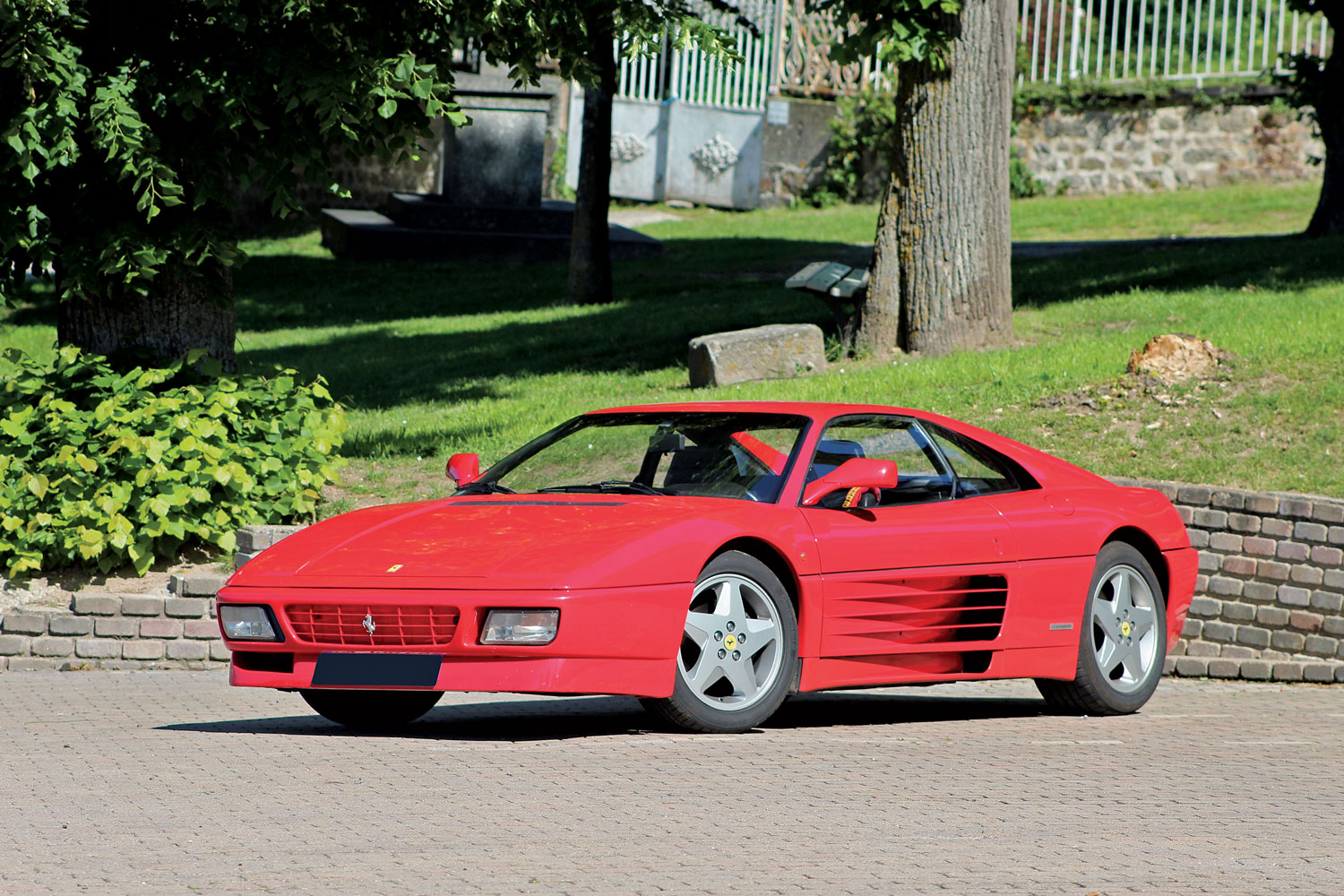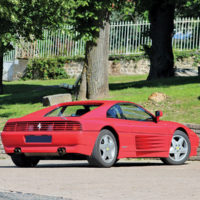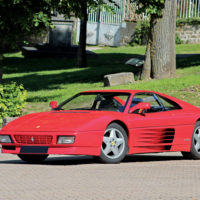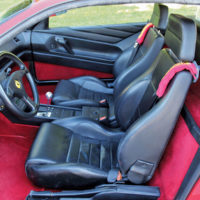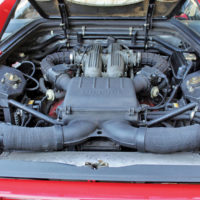SCM Analysis
Detailing
| Vehicle: | 1990 Ferrari 348 tb |
| Years Produced: | 1989–94 |
| Number Produced: | 2,895 |
| SCM Valuation: | $48,500 |
| Chassis Number Location: | Top frame rail, just above right shock |
| Engine Number Location: | Passenger’s side of the engine in the V, just in front of the oil filter |
| Club Info: | Ferrari Club of America |
| Website: | http://www.ferrariclubofamerica.org |
| Alternatives: | 1990–94 Porsche Carrera 2 1990–2005 Acura NSX, 1990–95 Chevrolet Corvette ZR-1 |
| Investment Grade: | S |
This car, Lot 153, sold for $70,125 (€59,600), including buyer’s premium, at Artcurial’s Monaco auction on July 19, 2021.
Bad press haunted the Ferrari 348 tb almost from the day of its 1989 debut. The media didn’t exactly pan the junior-Testarossa styling, but the cheese-grater side strakes and horizontal taillights were old news by the time the 348 was introduced. The new model certainly didn’t get the accolades Ferrari would have liked.
Once cars got into private hands, stories appeared noting issues with the 348’s timing-belt tensioner and unsatisfactory high-speed handling. By the time the 348 hit the U.S., the tensioner issue had been addressed. Handling, however, remained a problem. Even though few American owners would ever drive their cars within 50 mph of the speeds at which the 348 experienced high-speed lift, exotic cars are about dreams. And the dream of driving a 348 at top speed didn’t have a happy ending.
Two-time loser
Even before Ferrari’s CEO publicly admitted the 348 was a crap car (he used stronger language), magazine road tests were reaching that verdict. Car and Driver famously tested a 348 tb against a GMC Syclone. The truck won. In a five-car shootout with an Acura NSX, ZR-1 Corvette, Lotus Esprit Turbo and a Porsche 911 Carrera 4, the 348 only bested the 4-cylinder Esprit. During the test, the 348 was so skittish at high speed that the test driver chose to wait for a completely calm day to attempt a top-speed run.
There were other issues. The original alternator was not up to the demands of the car; it would take two updates to fix the problem. One particularly annoying fault was an a/c control-panel failure. The unfortunate owners who experienced this defect were left without heat or a/c. It took months to repair, as there was a wait for parts.
Yet Ferrari kept chipping away at the problems, and by the third year of production, most of the 348’s glitches had been addressed. The updates have since trickled down to many of the earlier cars. Unless you’re planning on touring at 150 mph, a 348 is a much more reliable car overall than the beloved F355 that replaced it.
Unfortunately, the early reviews stuck, and to this day, there’s an unwarranted perception that the 348 is a turkey. An unbiased look at the car shows that’s not true.
Modern but analog
The 348 put a toe into Ferrari’s future while remaining a basically analog car. It was Ferrari’s first unibody car, abandoning its traditional body-on-frame construction in favor of the lighter and less-expensive monocoque construction method most other manufacturers were using. Contrary to most previous mid-engine Ferraris, the engine was installed in a longitudinal position, with the transmission placed at the end of the engine rather than under it. This lowered the 348’s center of gravity for improved handling.
The lighter body was somewhat offset by the 348’s larger overall size and a bit more content, though these factors didn’t much hamper performance. The 3.4-liter engine is slightly larger than the 3.2-liter unit used in the 328 it replaced. Improved fuel injection combined with upgraded electronic engine management significantly bumped the 348’s output to 300 horsepower. When compared to Ferrari’s former flagship, the iconic 512 BBi, the 348 was quicker to 60 mph, with a similar top speed.
Performance is important in a Ferrari, but anyone who’s ever had one recognizes there’s more to the story. The 348 gives the driving experience that most owners expect. The interior is luxurious yet sporty. Turn the key and the engine explodes to a thunderous roar before calming down to idle. Touching the gas pedal brings an immediate response from an engine that accelerates linearly from standstill to redline. The steering is traditional Ferrari rack-and-pinion; it is precise, with the right amount of feedback. Braking is excellent, as expected.
The real proof of a Ferrari is its suspension, and the 348’s suspension only disappoints at very high speed. Great handling shouldn’t come at the expense of a harsh ride. On the road, the 348 suspension is compliant without being overly stiff. Bumps are easily absorbed without giving in to lean or wallow. In other words, the 348 drives like the Ferrari it is.
Not news
Our subject 348 tb is a relatively early-production example. Nothing was noted about updates, but the mileage would indicate any serious issues would likely have been addressed.
It’s curious that the catalog noted the engine was redone a month before the auction, but with no additional details. The resale probably voids any warranty on the work, which is not a responsibility to take on lightly.
A 348 tb is one of several entry-level Ferraris. Mondials are the lowest priced, with 308s, 328s and 348s all in the next tier. It’s the condition rather than the model that determines price in the lower tiers. Artcurial’s estimate for their 348 tb was roughly $50k to $70k. That shows what you should expect to pay to enter the Ferrari game.
For a partially painted, 42,000-mile, early 348 tb with a rebuilt engine, the price here — $70k — would have been news not long ago. But good entry-level Ferraris have all but dried up in the marketplace. I would not have recommended this car for a first-time buyer, but in today’s market, the number makes sense. Assuming the engine stays together, this was a decent outcome for both sides. ♦
(Introductory description courtesy of Artcurial.)
